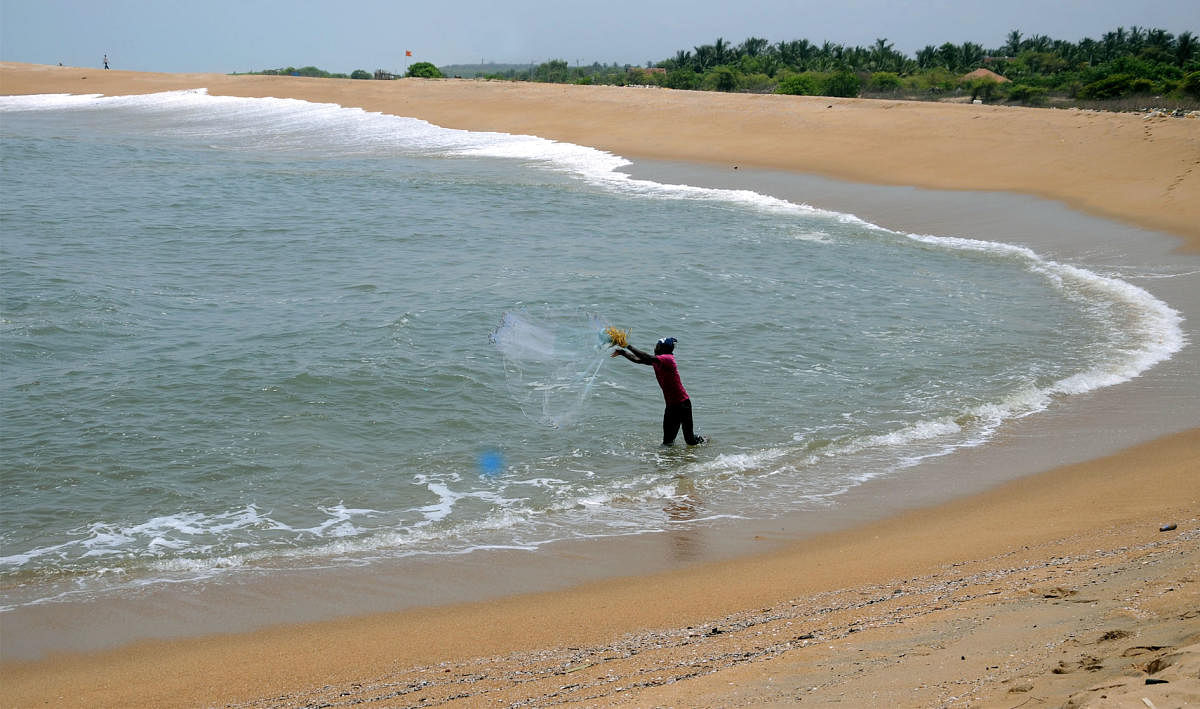Over two-thirds of the Earth’s surface is covered with water, with nearly 97% of this being in the oceans. Oceans are home to amazing creatures — from microscopic phytoplankton which produce most of the Earth’s oxygen to gigantic whales which take your breath away.
World Wildlife Day is celebrated each year on March 3 to celebrate and raise awareness about the diverse wildlife on our planet. The theme for 2019 is “Life below water: for people and the planet” which aligns with Goal 14 of the United Nations Sustainable Development Goals, i.e. to conserve and sustainably use the oceans, seas and marine resources.
Peninsular India, with a coastline of 7,517 km, is surrounded by the Arabian Sea on the west, the Bay of Bengal on the east and the Indian Ocean on the south. They are home to unique marine life which is harboured in a diverse range of ecosystems such as coral reefs, mangroves and estuaries.
The Andaman and Nicobar Islands in the Bay of Bengal have some of India’s major coral reefs and provide habitat to dugongs and breeding ground for turtles. The coast of Odisha is the largest mass nesting site in the world for the Olive Ridley turtles, with several lakhs of them returning each year to lay eggs. Some other marine species found in Indian waters are the leatherback sea turtles, tiger sharks, whale sharks, blue whales and Bryde’s whales.
The vast natural resources provided by oceans such as food, crude oil and minerals (like salt, manganese and nickel) play a major role in the country’s economy, diet and culture. However, in recent times, oceans have been deteriorating across the world due to many factors. Globally, plastic pollution in the oceans is a growing concern. In November 2018, a sperm whale was found dead in Indonesia with over 6 kg of plastic in its stomach. Canadian scientists recently reported evidence for the presence of plastic contaminants in bird eggs in the Arctic. The deepest point on Earth, the Mariana Trench, was also found to contain startling amounts of plastic.
“There is no doubt that there is a lot of plastic in our waters, as evidenced by the volume of it that washes up, and also from the increasing number of fishers who report catching a whole lot of plastic in their nets,” says marine biologist Abhishek Jamalabad. “We find plastics in our ocean not only because individuals are careless and don’t dispose of plastics carefully but because the system itself doesn’t work towards reducing plastic in packaging,” adds Marianne Manuel, assistant director of Dakshin Foundation.
Overexploited fish stocks
Fishing has been an important occupation for people living in the coastal areas of India for hundreds of years. However, recent unsustainable fishing methods such as bottom trawling and dynamite fishing, along with overfishing have over-exploited the oceans, depleting fish stocks and pushing some species to the brink of extinction. Vulnerable species like turtles, dolphins, sea snakes, rays and sharks often end up as by-catch while trawl fishing, a method which involves pulling a net through the water using one or more boats.
“Marine Capture Fishing policy all over the coastal states have to be reviewed from the point of conservation and ecosystem perspective. The Fisheries Department mainly works as a welfare department and its regulatory roles are limited. Data from the last five decades has shown that fish landings aren’t decreasing despite a multifold increase in fishing efforts, technologies and number of fishing vessels. This indicates the availability of limited fish production and (that) an ecosystem approach to fisheries needs to be focused on,” says Mahabaleshwar Hegde, a marine biologist. “Two threats that often go under the public radar are unplanned shipping expansion and the port development that goes with it, threatening marine environments and the people who live around and depend upon them, and the extraction of minerals and fossil fuels from the sea, which first damages marine ecosystems during the prospecting process and then opens up very serious pollution hazards,” adds Jamalabad.
In an effort to spread awareness about the diverse marine life on our shores and the threats faced by them, Jamalabad co-founded Marine Life of Mumbai (MLOM), a volunteer-driven initiative which conducts regular shore walks on Mumbai’s beaches. Apart from encouraging more people to explore the shores, they also collect data about the different species they find and upload this information on iNaturalist, an open biodiversity database. “We have built a repository of Mumbai’s intertidal biodiversity that currently clocks in over 1,300 observations of 284 species, excluding the unidentified species, and we are still continuing to catalogue newer finds during visits to the shores,” says Jamalabad.
As an individual, whether you live close to the coast or not, here are some ways in which you can contribute to marine conservation this World Wildlife Day:
- Reduce usage of plastic products: Mismanaged household plastic waste from drains and landfills eventually finds its way into the oceans. Refuse single-use plastic like straws, bottles, stirrers, etc and switch to eco-friendly alternatives.
- Make sustainable seafood choices: Buy locally from the fish market instead of supermarkets. Avoid eating certain species of fish during their breeding season. Initiatives like ‘In Season Fish’ and ‘Know Your Fish’ provide details on specific fish breeding seasons and alternative fish species which can be eaten during this period.
- Support organisations working towards ocean conservation: Volunteer with a local NGO that works on marine conservation such as Dakshin Foundation, Panchabhuta Conservation Foundation and Rushikulya Sea Turtle Protection Committee.
- Support citizen-science initiatives: Join nature walks and initiatives like MLOM, which not only spread awareness about conservation but also help collect data and build networks.
- Take care of the beach: Ensure you don’t leave any waste behind during visits to the beach. You can also join local clean-up drives.
